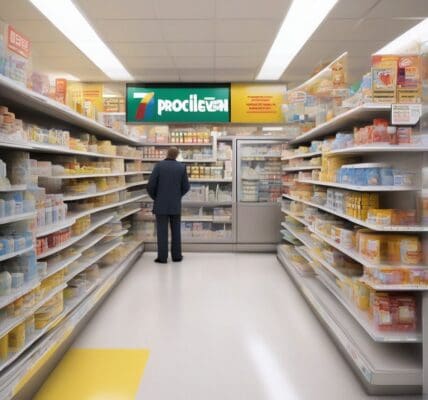In a strategic move that promises to reshape the pharmacy delivery landscape, Walmart has announced it will now deliver prescription medications within a remarkable 30-minute window. This new service comes in addition to their traditional grocery delivery options, appealing to the increasing demand for swift and convenient health solutions.
Previously, obtaining prescription medications from Walmart involved a time-consuming process that typically took between five to seven business days. If customers needed quicker service, overnight delivery was available, albeit for an additional $15 charge. The introduction of this express delivery option marks a significant advancement in Walmart’s capability to meet customer needs in real-time, responding to an essential market demand for both speed and convenience.
The expansion of this service is particularly timely; it follows closely on the heels of Amazon’s announcement to launch pharmacies with same-day delivery options across 20 major U.S. cities by 2025. By ramping up their own delivery service, Walmart aims to not only retain but also grow its market share in the pharmacy sector. With nearly 4,600 store locations housing pharmacies, Walmart has a solid foundation to support this initiative.
Currently, the new delivery option is available in six states, specifically Arkansas, Missouri, New York, Nevada, South Carolina, and Wisconsin. Walmart has plans to expand this service across 49 states by the end of January next year. For Walmart Plus members, the delivery will be available free of charge; standard delivery costs for non-members will be set at $9.95, an attractive pricing model in a competitive market.
Customers will have the flexibility to choose how they want their medications delivered, selecting between on-demand express delivery, which ensures items are available within 30 minutes, or scheduling for same-day delivery at their convenience. This approach not only enhances customer choice but also integrates seamlessly with Walmart’s existing grocery and retail services. Consumers will be able to combine their grocery and medication orders within a single transaction, available both online and via the Walmart app.
Walmart specifies that this service will cover all medications except for controlled substances, items requiring refrigeration, and Medicare Part B items related to outpatient care. This distinction is crucial, as it informs customers about what they can expect from the new service, ensuring compliance with legal and safety regulations while still offering a broader range of accessible health products.
In terms of competition, other players in the market have already begun to establish similar services. For instance, CVS Health offers free same-day delivery through its membership program, CarePass, while Walgreens has introduced 24-hour delivery for various pharmaceutical products and over-the-counter medicines. By effectively aligning their resources and leveraging their extensive physical store network, Walmart can enhance their delivery speed and efficiency, putting them in a strong position against these competitors.
However, it’s worth noting that earlier this year, Walmart announced the closure of its 51 health clinics and virtual healthcare operations, citing a lack of sustainability in those business models. While the company’s pharmacy delivery expansion seems promising, the recent closure raises questions about its overall healthcare strategy and the resources allocated to different components of its health services.
As this new delivery service rolls out, it will undoubtedly be closely monitored by industry analysts and consumers alike. It stands as a clear indicator of Walmart’s commitment to addressing consumer needs through innovative service offerings. For those already within the Walmart ecosystem, this development could significantly enhance their shopping experience, making it more convenient to manage both grocery and pharmaceutical needs.
In conclusion, Walmart’s push to deliver prescription medications within 30 minutes signifies not just a shift in their operational strategy but also a landmark moment in the retail pharmacy sector. It highlights an evolution in consumer expectations and the competitive dynamics within the healthcare and retail industries.











